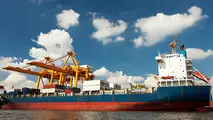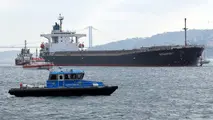IMO prepares for showdown over shipping decarbonization
International Maritime Organization (IMO) delegates have arrived in London ahead of next week’s meeting of the Marine Environment Protection Committee (MEPC), with the stage set for a fight over how to reduce the shipping industry’s carbon emissions.
International Maritime Organization (IMO) delegates have arrived in London ahead of next week’s meeting of the Marine Environment Protection Committee (MEPC), with the stage set for a fight over how to reduce the shipping industry’s carbon emissions.
A working group has held private meetings this week to prepare a draft strategy that the MEPC will discuss in an open session next week.
Various countries’ delegations have made a wide range of proposals, ranging from no outright cap on carbon emissions to a 100% drop by 2035.
All European Union member states have signed up to a proposal for a 70-100% cut in shipping’s carbon emissions from 2008’s levels by 2050.
They argue anything less than this would threaten the goal of the 2015 Paris Agreement to keep global warming to 1.5 degrees Celsius over pre-industrial levels.
Shipping’s levels of carbon emissions in 2008 were estimated in a 2014 IMO study on greenhouse gas emissions.
Meanwhile a separate group of nine countries including Brazil, Saudi Arabia and India have proposed that there should be no outright cap on shipping sector emissions.
Japan has argued for a 50% cut by 2060, and the Marshall Islands have called for a 100% cut by 2035.
A source said the eventual draft strategy taken to next week’s MEPC meeting may suggest a compromise position of a 50% cut from 2008’s levels by 2050.
The EU has previously threatened to impose stricter standards at the European level if it is not satisfied with the global agreement reached by the IMO.
It has previously said it will include shipping in its emissions trading scheme if the IMO does not have a plan in place on greenhouse gas emissions by 2023.
If the EU pursues its own measures, the regulation of shipping emissions in Europe may follow a similar path to the approach taken for aviation.
The 1997 Kyoto Protocol regulated each signatory country’s greenhouse gas emissions, which are accounted at the national level.
Since international shipping and aviation’s emissions mostly occur outside national boundaries, signatories to Kyoto agreed to pursue international shipping and aviation emissions through the IMO and International Civil Aviation Organization (ICAO), respectively.
With little concrete progress on reducing aviation emissions at the ICAO, European policymakers in 2006 said they would bring aviation into Europe’s carbon market in 2012 unless ICAO agreed a policy framework that would control aviation’s emissions.
That caused an international spat in 2010-12 and led to the EU bringing emissions from intra-European flights into its Emissions Trading System, while making intercontinental flights exempt until the ICAO demonstrated a workable global system for controlling aviation emissions.
That system will require airline operators to offset any post-2020 growth in their emissions using credits.
Last month BIMCO, the world’s largest international shipping association, said the problem should be handled at the global level by the IMO.
“It may sometimes look from the outside that the IMO is a feet-dragging body, but those who are familiar with the procedures know that it is absolutely well-functioning,” Peter Sand, an analyst for BIMCO, told S&P Global Platts in March. “I think we should stop the blame game.”
The International Chamber of Shipping has said the EU’s proposed carbon cut has “a very high level of ambition” and is unlikely to achieve consensus, while Japan’s proposal “would still provide a compelling signal to the industry.”



